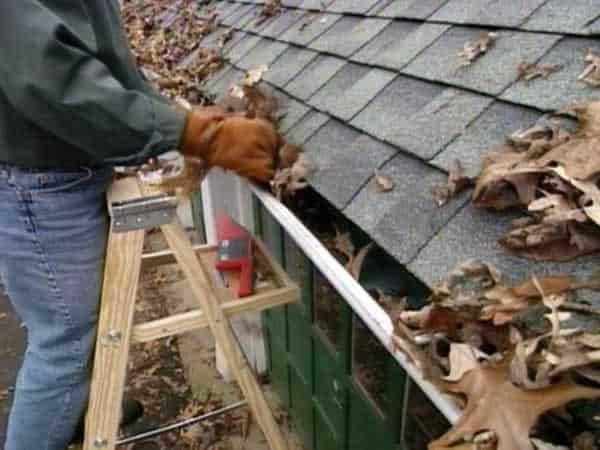Homeowners take pride in their homes and do everything to protect them. And installing gutters is one way to protect your home from water-related damage. However, your home’s design and its location determine the style and size of the gutters you must install. Though considered a more straightforward construction project, your home’s gutter system can’t serve its purpose efficiently if you don’t install it properly.

Common gutter installation mistakes occur due to a lack of knowledge in the process. While it’s not impossible to do the installation on your own, hiring professional help makes a significant difference. Apart from shielding you from incurring unnecessary additional costs, they can also help you choose the right gutter type and size for your home. You can find out here to learn more about gutter installation and find the help you need.
Before you install a gutter system at home, you must learn to avoid these pitfalls:
1. Wrong Gutter Size
The width of a gutter determines the amount of rainfall it can divert from your roof. Small gutters lead to overloading, especially in heavy rainfall. Inefficient drainage can also damage your gutters and, over time, cause structural damage to your home’s foundation. When shopping for gutters, consider the average rainfall in your area, your roof’s size, and your home’s layout. A steeper roof pitch will collect more water.
2. Improper Gutter Pitching
Rainwater should travel directly into the gutters and downspouts. The angle that the gutters hang affects the water flow. If the gutters are too steep, rainwater will flow too quickly and result in a flow-out. On the other hand, if you pitch the gutters insufficiently, the lower pitch might interfere with the flow speed. Either can damage your gutters and cause issues with your home’s exterior. Typically, your gutters should slope toward the downspouts at about 1/4 of an inch for every 10 feet. This guarantees efficient water flow.
3. Using Too Many Seams
Even though they hold different sections of the gutter together, seams are the most vulnerable points in a gutter system. They’re the most likely place for gutter clogs, leaks, and other types of damage. On the other hand, you can go for seamless gutters as an alternative. Gutter seams that aren’t sealed or screwed firmly in place also threaten the gutters’ integrity. A fragile gutter risks falling apart, especially against strong winds, snow, or heavy rainfall.

4. Spacing Hangers Too Far Apart
Rain gutters are mounted by hangers placed all over the gutters’ length. Sloping your gutters at the right angle won’t achieve much if you spaced the gutter hangers improperly. Incorrect spacing will cause the gutters to sag, leading to water pooling. The extra weight that the gutters will be subjected to by the water will cause the gutters to detach over time. Besides ruining your gutters, the pooled water attracts mold and becomes a breeding ground for insects and bacteria.
5. Insufficient Or Wrong Downspout Placement
Downspouts should absorb water from the gutters and direct it away from your home. If improperly installed or positioned in the wrong place, rainwater can seep into your home’s foundation or mess up its exterior. Where and how many you install determines how well your system performs. If there aren’t enough in the right locations, your system can suffer from water overload when it rains. Poor placement can also lead to damage to your landscaping and sidings. Downspouts should ideally be able to divert water from your home’s foundation at a distance of between 8 and 10 feet.
6. Choosing The Cheaper Option
As a homeowner, you might be tempted to go for a more economical gutter system. While it may seem like a way to save on costs, the less costly options tend to be of inferior quality. You risk having a gutter breakdown and damage to your home. Moreover, you might need to replace the cheaper gutters after a short time, translating to more costs than you initially saved. A high-quality gutter system is an investment that will serve you well for a long time.
7. Damaging Gutters During Installation
The gutter installation process should be precise, and you must take the utmost care to avoid damage. Aluminum gutters are the most prone to damage by bending or denting. Handle them carefully to prevent them from falling or being hit by a ladder during installation. Otherwise, you incur extra costs by replacing the gutters or parts of them.
Conclusion
Gutter installation requires the right skills to get it right the first time. While you want to save on labor costs, any installation error can set back the project. Your roof may become vulnerable to moisture, and your gutter system might be useless in the worst-case scenario. If you’re not confident with the installation, it’s best to let professionals handle the job. That way, you save a lot of time and effort and know the professionals install your gutters properly and your home is protected.






